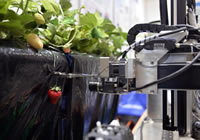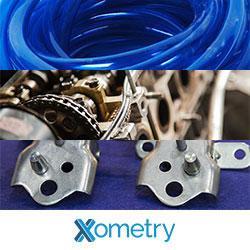Why Robotics Will Change Agriculture
 Rob Trice & Seana Day via Forbes: Last month as our Mixing Bowl colleagues Michael Rose and An Wang were interviewing Sonny Ranaswamy of the USDA’s NIFA to better understand current US food and agriculture labor issues, we were representing The Mixing Bowl in discussions on potential solutions to food production labor issues through automation and robotics.
Rob Trice & Seana Day via Forbes: Last month as our Mixing Bowl colleagues Michael Rose and An Wang were interviewing Sonny Ranaswamy of the USDA’s NIFA to better understand current US food and agriculture labor issues, we were representing The Mixing Bowl in discussions on potential solutions to food production labor issues through automation and robotics.
At this year’s RoboUniverse event in San Diego there was a full-day track on December 14th dedicated to the application of robotics to agriculture. The industry track, pulled together in great part by Nathan Dorn, CEO of Food Origins and an Advisor to The Mixing Bowl, featured a knowledgeable group of automation/robotics experts and food producers who drew on their experience to define the opportunities and sharpen focus on the challenges. Nathan authored a detailed summary of the day in a post on Agfunder.
Our conclusion is that there is no denying that we are still in the early days of adoption of robotics in agriculture. Cont'd...
Comments (0)
This post does not have any comments. Be the first to leave a comment below.
Featured Product

